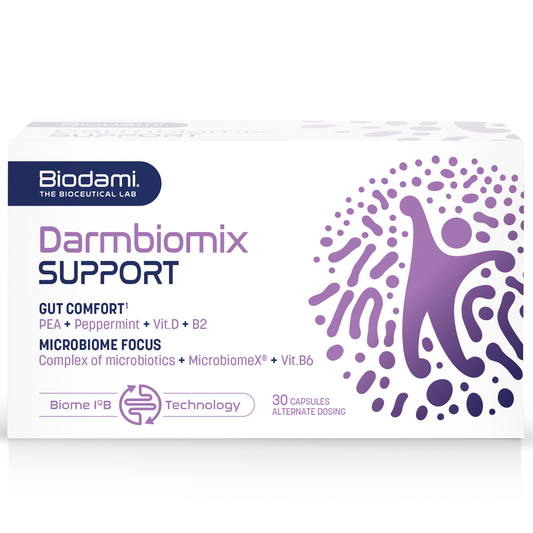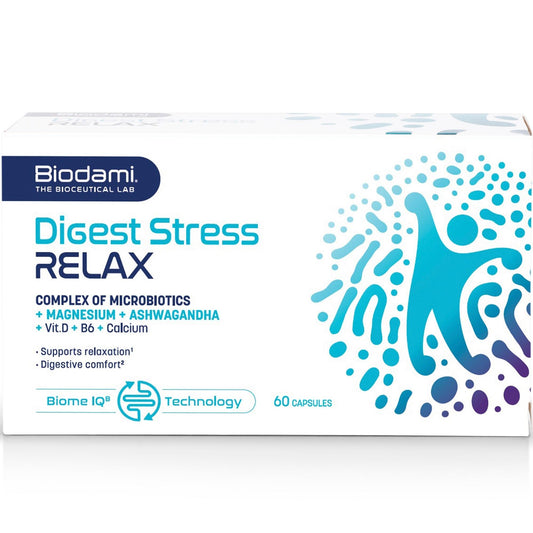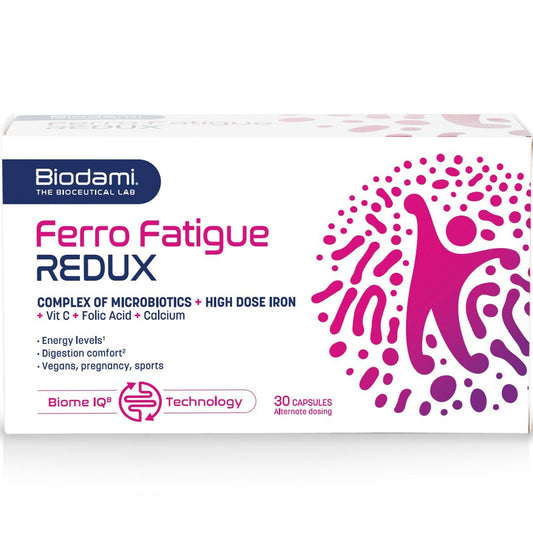CELIAC DISEASE
Celiac disease (CD) is a disease with autoimmune characteristics and is triggered by gluten containing foods (read here about gluten). It affects genetically susceptible individuals. It is a multifactorial disorder that involves both environmental and genetic factors such as genetic variants encoding HLA DQ2/DQ8 genes (genes belonging to the Human Leukocyte Antigen (HLA) complex).
30%-40% of the population carries this gene yet only 1% suffers from celiac disease [1,2] .This means that the disease is not simply related to genes. The gut microbiome is different in celiac patients. The gut microbiome is influenced by the environment – such as the foods we eat or the use of antibiotics [3]. One proposed pathogenesis of celiac lies both in the genetic make-up of the host and the environmental factors that promote the dysbiosis and the "leaky gut". In the presence of gluten, the immune gut homeostasis is broken down, disrupting the gut integrity. This generates a vicious cycle leading to the development of celiac disease.

Consequence
If left untreated, celiac disease can cause malabsorption of nutrients such as iron and vitamin B12 due to the decreased functionality of the gut lining (villous atrophy). Consequently, this would affect other healthy systems in the body and can further lead to other chronic complications such as lactose intolerance, increased risk of osteoporosis, Crohn’s disease and iron deficiency anemia and infertility amongst others[4].
Symptoms
Celiac disease can be difficult to diagnose because there is not 1 uniform gut composition and the symptoms can differ. The onset of symptoms is usually gradual. Most common symptoms of celiac disease include:
- Abdominal pain
- Bloating and flatulence
- Constipation
- Diarrhea
- Fatigue
- Depression/Anxiety
- Nausea
- Migraine
- Itchy skin
- Joint pain
- Weight loss
Diagnosis
It is difficult to diagnose CD because of the complexity of the disease though diagnosis has improved over the last decades. What is typically used to diagnose is a “4 out of 5” rule to confirm [5].
- Does the patient show typical symptoms of CD
- Is there a presence of positive serum IgA class antibodies
- Does the patient have the genotypes HLADQ2 and HLADQ8
- Does a bowel biopsy show celiac enteropathy
- Is there a response (ie. Relief) to Gluten Free Diet
Treatment
To date, the only treatment for patients with celiac disease is to adhere to a very strict Gluten Free Diet (GFD) which has been proven to improve the appearance of the intestinal villi (read here about the villous atrophy) and has been associated with an improved quality of life and decrease in long term health risks. However, compliance to this restrictive diet varies between 42% and 91%. Compliance to GFD is very difficult despite there being many gluten free alternatives available on the market [6]. GFD can be poor in certain nutrients, expensive, sensorially & organoleptically unpleasant but also socially difficult to adhere to. It is almost impossible to prevent accidental exposure to gluten given its widespread use. Compliance to the diet is extremely challenging, 40% of Celiac disease patients are deeply unsatisfied with the gluten free diet and are keen to explore alternatives [7].
Unfortunately there is no alternative to the gluten free diet yet.
Recommended For You
Kristina Cueva
Kristina is passionate about understanding diseases and their underlying mechanisms, especially the key role of the microbiome in our health. With a background in biomedical sciences and public health, she applies this expertise to developing innovative, science-backed supplements.
References
1. Van Buiten, C. B., Lambert, J. D., & Elias, R. J. (2018). Green Tea Polyphenols Mitigate Gliadin-Mediated Inflammation and Permeability in Vitro. Molecular nutrition & food research, 62(12), e1700879. https://doi.org/10.1002/mnfr.201700879
2. Marasco, G., Cirota, G. G., Rossini, B., Lungaro, L., Di Biase, A. R., Colecchia, A., Volta, U., De Giorgio, R., Festi, D., & Caio, G. (2020). Probiotics, Prebiotics and Other Dietary Supplements for Gut Microbiota Modulation in Celiac Disease Patients. Nutrients, 12(9), 2674. https://doi.org/10.3390/nu12092674
3. Cenit, M. C., Olivares, M., Codoñer-Franch, P., & Sanz, Y. (2015). Intestinal Microbiota and Celiac Disease: Cause, Consequence or Co-Evolution?. Nutrients, 7(8), 6900–6923. https://doi.org/10.3390/nu7085314
4. Posner EB, Haseeb M. Celiac Disease. [Updated 2022 May 15]. In: StatPearls [Internet]. Treasure Island (FL): StatPearls Publishing; 2022 Jan-. Available from: https://www.ncbi.nlm.nih.gov/books/NBK441900/
5. Sapone, A., Bai, J.C., Ciacci, C. et al.Spectrum of gluten-related disorders: consensus on new nomenclature and classification. BMC Med 10, 13 (2012). https://doi.org/10.1186/1741-7015-10-13
6. Hall, N. J., Rubin, G., & Charnock, A. (2009). Systematic review: adherence to a gluten-free diet in adult patients with coeliac disease. Alimentary pharmacology & therapeutics, 30(4), 315–330. https://doi.org/10.1111/j.1365-2036.2009.04053.x
7. Aziz, I., Evans, K. E., Papageorgiou, V., & Sanders, D. S. (2011). Are patients with coeliac disease seeking alternative therapies to a gluten-free diet?. Journal of gastrointestinal and liver diseases : JGLD, 20(1), 27–31.
Find out how Gluten Redux could support you with your GLUTEN FREE DIET









